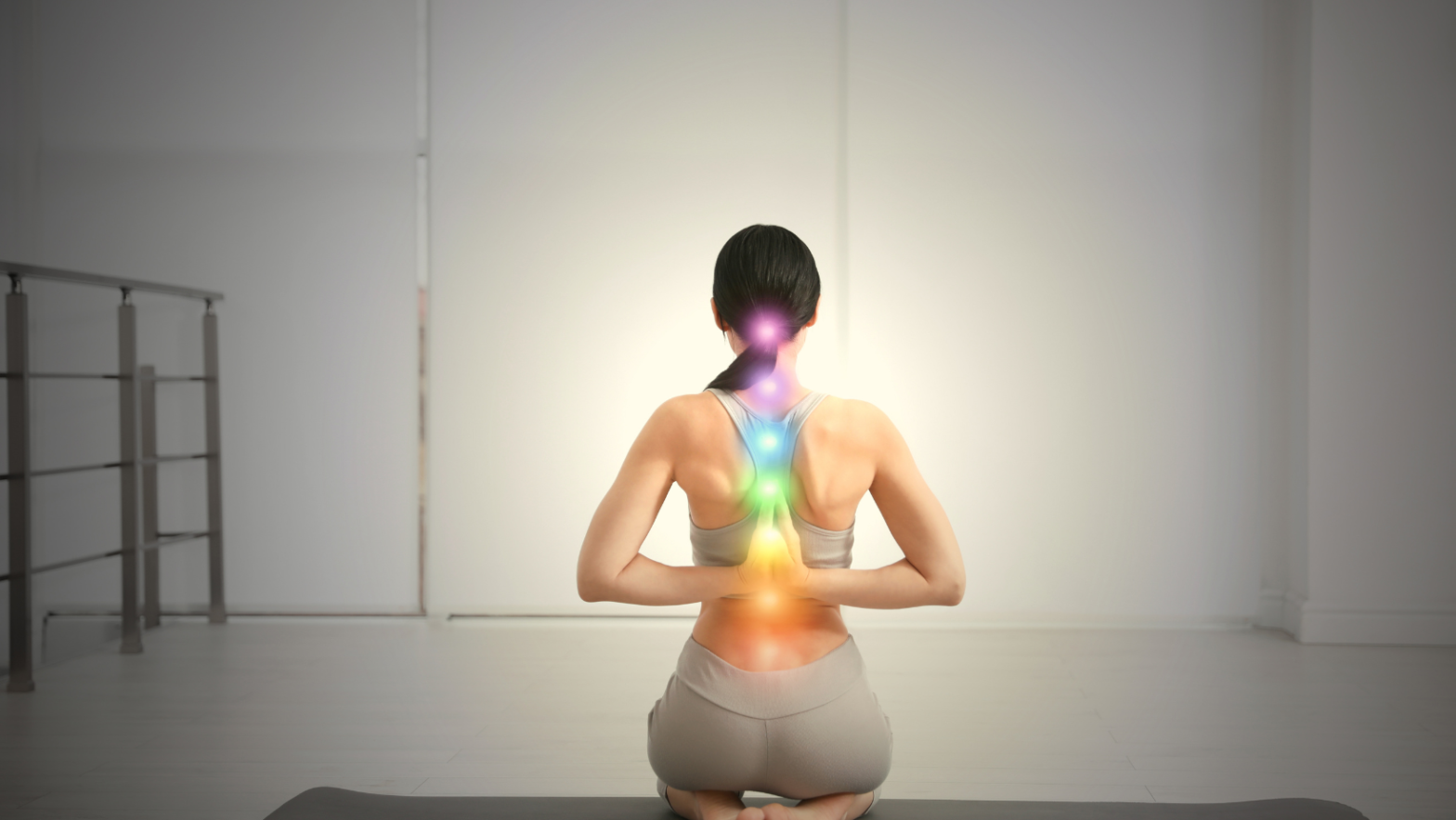Chakras: The Energy Centers Within
We all have our unique journeys when it comes to discovering the incredible potential of mind-body healing. In this article, we will explore a profound aspect of mind-body healing – harnessing the power of chakras. If you’re intrigued by the idea of balancing your energy centers and unlocking new levels of well-being, read on.
Chakras, which means “wheels” in Sanskrit, are the seven fundamental energy centers within the human body. These swirling wheels of energy are the cornerstone of understanding the profound mind-body connection that yoga offers. Each chakra corresponds to distinct aspects of our being, playing a vital role in our emotional, physical, and spiritual well-being. To embark on a journey of deep healing and balance, it is essential to comprehend the significance of these chakras.
Imagine your body as a complex web of energy, with seven primary energy centers – the chakras. The seven chakras are aligned along the spinal column, from the base of the spine to the crown of the head, and they are often depicted as colourful wheels, each associated with a unique colour and symbolism. Here’s a brief overview of the seven primary chakras:
Root Chakra (Muladhara): Located at the base of the spine, the root chakra represents our foundation, stability, and basic survival instincts.
Sacral Chakra (Svadhisthana): Situated just below the navel, the sacral chakra governs our emotions, creativity, and sensuality.
Solar Plexus Chakra (Manipura): Located in the upper abdomen, this chakra is associated with personal power, self-esteem, and confidence.
Heart Chakra (Anahata): Found at the center of the chest, the heart chakra is linked to love, compassion, and emotional balance.
Throat Chakra (Vishuddha): Located at the throat, this chakra governs communication, self-expression, and speaking one’s truth.
Third Eye Chakra (Ajna): Positioned between the eyebrows, the third eye chakra is connected to intuition, inner wisdom, and perception beyond the physical realm.
Crown Chakra (Sahasrara): Situated at the top of the head, the crown chakra symbolises spiritual connection, divine consciousness, and enlightenment.
The balance and alignment of these chakras are crucial for our overall well-being. Just as people often recognise imbalances within themselves, you can also identify and address imbalances within your chakras. When chakras are blocked or overactive, it can lead to physical discomfort, emotional turmoil, or mental obstacles. The practice of yoga, meditation, and mindfulness offers a profound opportunity to tap into the power of chakras, paving the way for healing and harmony in our lives.
Balancing Your Chakras with Yoga
Yoga practices specifically designed to balance your chakras can serve as a transformative tool for releasing both physical and emotional tension, ultimately leading to more profound relaxation and better sleep. Aligning your chakras allows you to harness the ancient wisdom of self-healing and enhances your overall well-being.
Balancing chakras through yoga involves a combination of postures, breathing techniques, and focused meditation. Here’s a brief overview of how you can balance your chakras through yoga:
Root Chakra (Muladhara): Grounding poses like Tadasana (Mountain Pose) and Virabhadrasana I (Warrior I) can help stabilise the root chakra, promoting feelings of security and stability.
Sacral Chakra (Svadhisthana): Hip-opening poses like Baddha Konasana (Butterfly Pose) and Svastikasana (Auspicious Pose) can help unlock and balance the sacral chakra, enhancing emotional expression and creativity.
Solar Plexus Chakra (Manipura): Poses that engage the core, such as Navasana (Boat Pose) and Ustrasana (Camel Pose), can empower the solar plexus chakra and boost self-confidence.
Heart Chakra (Anahata): Heart-opening poses like Urdhva Dhanurasana (Wheel Pose) and Bhujangasana (Cobra Pose) can help open and balance the heart chakra, fostering love and compassion.
Throat Chakra (Vishuddha): Poses that stretch and engage the neck, like Halasana (Plow Pose) and Matsyasana (Fish Pose), can promote open communication and self-expression.
Third Eye Chakra (Ajna): Meditation and forward-bending poses, such as Balasana (Child’s Pose) and Ardha Pincha Mayurasana (Dolphin Pose), can awaken the third eye chakra, enhancing intuition and insight.
Crown Chakra (Sahasrara): Meditation and inverted poses like Sirsasana (Headstand) and Salamba Sarvangasana (Shoulderstand) can stimulate the crown chakra, fostering spiritual connection and enlightenment.
By incorporating these practices into your daily routine, you can unlock the power of your chakras and experience a profound sense of balance and well-being. For those eager to explore the depths of chakras and their healing potential further, we invite you to consider our
200hr yoga teacher training programme in London, where you’ll gain comprehensive knowledge and skills to guide others on their own mind-body healing journeys.
When you study at
The House of Yoga Trainings, your course is Yoga Alliance accredited, so your new qualification really could take you anywhere!

